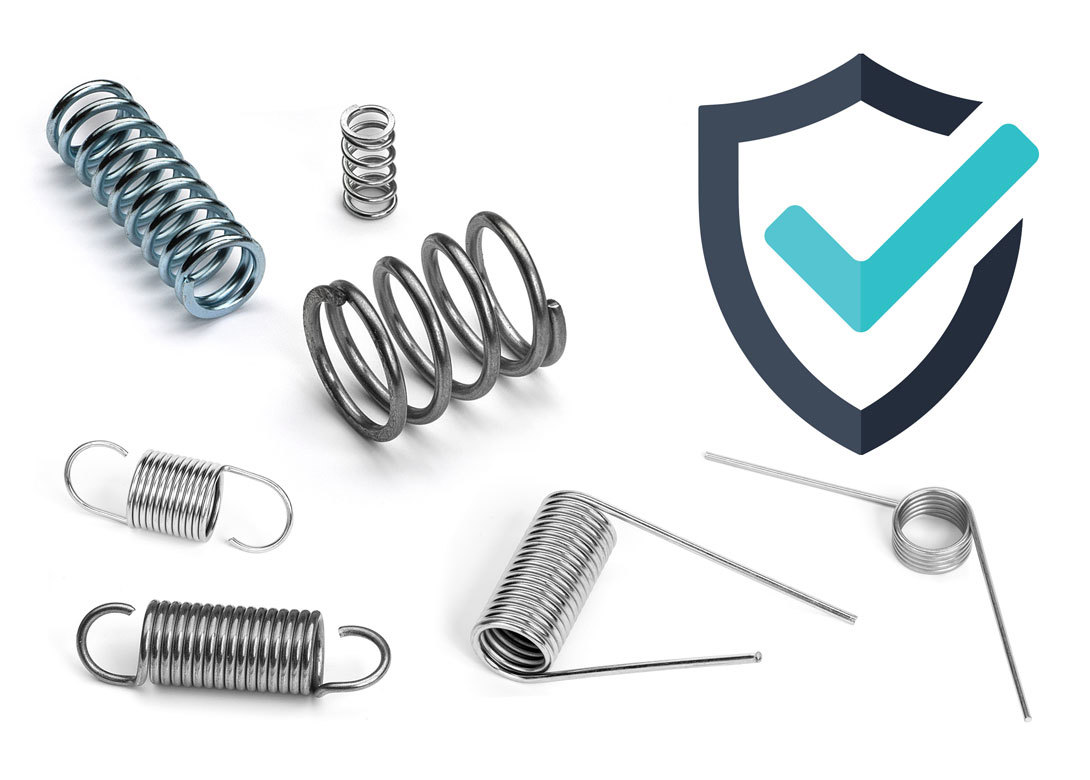
Materials with high alloy content, known as super alloys or exotic alloys, offer enhanced performance properties including excellent strength and durability, and resistance to oxidation, corrosion and deforming at high temperatures or under extreme pressure. Because of these properties, super alloys make the best spring materials for demanding working conditions, which can be encountered across various industry sectors, including the automotive, marine and aerospace sectors as well as oil and gas extraction, thermal processing, petrochemical processing and power generation.
Super alloy springs can be used in a number of severe conditions including extreme high or low temperatures, great pressure and facing outdoor conditions, including extreme weather. Springs not made from super alloys, if used in these circumstances, are at risk of becoming deformed or damaged, as they will not be strong enough to withstand heavy impact or harsh conditions.
“The reliability of the finished product in its application hinges on the correct material selection to meet the specific application requirements. Stainless steel, for example, is tough and corrosion resistant, but it does not offer the properties that are required in order to withstand extreme heat, so is likely to distort when exposed to high temperatures. It is essential to clearly understand the environment that the spring is likely to be used in,” comments Darren Eyre, technical specialist at Lee Spring.
“Springs required to operate in harsh environments could mean anything from underwater, contending with corrosion from saltwater, or contact with ‘sour’ gas from drilling down under the sea bed, to 35,000 feet up in the air battling low temperatures and high wind speeds. Offshore applications require equipment that is capable of ‘braving the elements’, and some manufacturing or furnace applications involve extreme high or low temperatures. Some applications will involve the equipment being subjected to highly corrosive substances,” says Barry Steele, applications engineer at Lee Spring.
A good example is the nickel-cobalt alloy, MP35N which consists of nickel and cobalt and is ideally suited to marine and sub-sea applications due to its resistance to hydrogen sulphide, salt water and mineral acids, which can have a highly corrosive effect on most metals. Monel is a nickel-based alloy that incorporates copper and iron. It is corrosion resistant and acid resistant, so is suitable for marine applications as well as applications involving acids and other highly corrosive substances.
Many and varied specific characteristics dependant on the actual alloy chosen, e.g. Ni Ti nickel-titanium springs exhibit super elasticity which can be useful in orthodontic applications.
Titanium alloy springs are widely used in off-road bicycles also F1, WRC rally and Touring/GT, in fact pretty much all levels of high-performance competition where weight and performance are critical.
Inconel alloys are available in different grades (600, X-750 and 718) and are suitable in valves, pumps or actuators, for applications that involve high pressure and high temperatures, for example in nuclear power stations or for drilling on offshore platforms. Nimonic and Hastelloy alloys are also corrosion resistant and are suitable for applications involving high pressure and high temperature.
Other nuanced alloy configurations are often used where more cost-conscious alternatives are desired without the absolute ultimate performance demand. It is essential to clearly understand the environment that the spring is likely to be used in and usually to consult the materials specialists at the spring manufacturer.

Having spent a decade in the fastener industry experiencing every facet – from steel mills, fastener manufacturers, wholesalers, distributors, as well as machinery builders and plating + coating companies, Claire has developed an in-depth knowledge of all things fasteners.
Alongside visiting numerous companies, exhibitions and conferences around the world, Claire has also interviewed high profile figures – focusing on key topics impacting the sector and making sure readers stay up to date with the latest developments within the industry.





